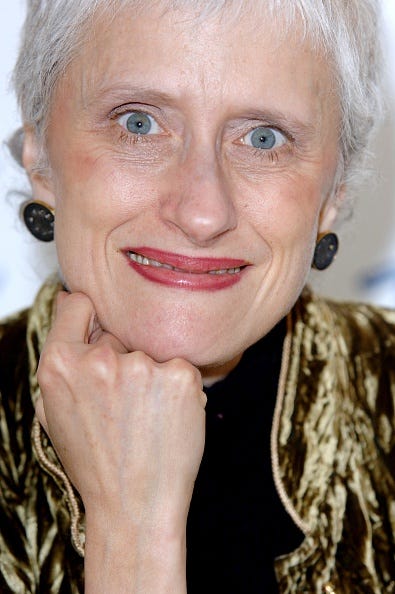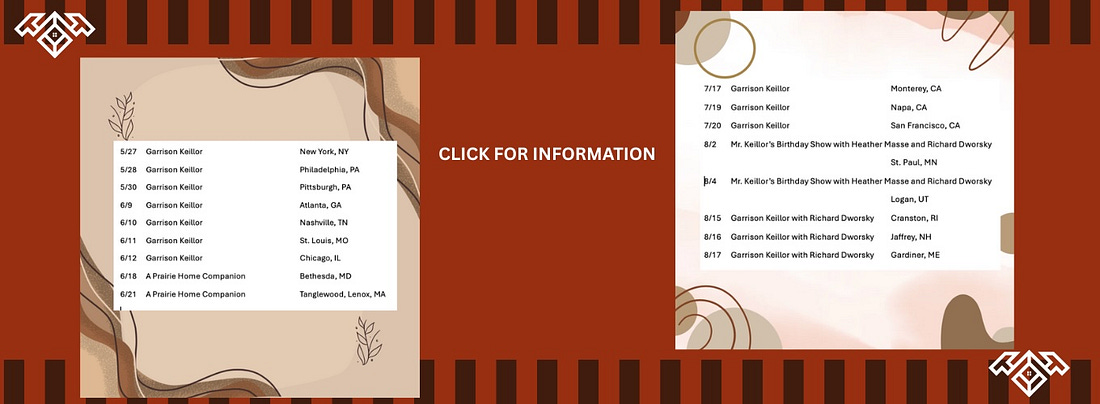|
 |
The Writer's Almanac from Sunday, June 8, 2014
"Relief" by Kay Ryan from The Best of It: New and Selected Poems. © Grove Press, 2010.
ORIGINAL TEXT AND AUDIO - 2014
It's the birthday of the editor who ushered in the Golden Age of Science Fiction: John W. Campbell, born in Newark, New Jersey (1910). His father was an electrical engineer, and Campbell was interested in science from the time he was a kid. He started writing science fiction when he was 18, a student at the Massachusetts Institute of Technology, and published his first story a year later.
He wrote under his own name and a pseudonym, Don A. Stuart. His work includes the novella Who Goes There? (1938), about a group of researchers in Antarctica who discover an alien buried in the ice. The alien has the ability to inhabit the body of anyone it attacks, to such a convincing degree that it is impossible for the researchers to recognize which of them are still themselves and which are now aliens. It was made into the film The Thing From Another World (1951), its remake The Thing (1982), and later this year, a prequel, also called The Thing.
John Campbell's most lasting contributions to science fiction came from his role as an editor. In 1937, the editor of the science fiction magazine Astounding Stories retired and hired Campbell to replace him. Campbell immediately changed the name to Astounding Science-Fiction (and later to Analog), and he transformed the magazine. He wanted to change its reputation from that of a pulp fiction publication to one based on real science. He recruited and championed writers like Isaac Asimov, A.E. van Vogt, Robert A. Heinlein, and Theodore Sturgeon. He demanded that the stories he publish have convincing science as well as convincing characters. He preferred uncomfortable ideas that would push readers, and he had no qualms insisting that his writers completely change the endings of stories if he didn't like them. Isaac Asimov said, "What he wanted were people who would write stories in which the science was realistic. Not realistic in the sense that they couldn't go out into the blue yonder, not realistic in the sense that they couldn't extrapolate wildly, but realistic in the sense that people who worked in science resembled people who actually worked in science. That scientists acted the way scientists do, that engineers acted the way engineers do — and in short, that the scientific culture be represented accurately."
Asimov said of Campbell: "When I first met him I thought of him as ageless. He was a tall, large man with light hair, a beaky nose, a wide face with thin lips, and with a cigarette in a holder forever clamped between his teeth. He was talkative, opinionated, quicksilver-minded, overbearing. Talking to him meant listening to a monologue. Some writers could not endure it and avoided him, but he reminded me of my father, so I was perfectly willing to listen to him indefinitely."
It's the birthday of best-selling crime novelist Sara Paretsky, born in Ames, Iowa (1947). She grew up in rural Kansas. Her parents were brilliant but troubled. Her father was a microbiology professor at the University of Kansas, her mother a frustrated housewife who had never lived up to her intellectual potential. Her father was from New York, and felt alienated in Lawrence where there were few other Jewish people, so he decided they needed to leave the city. He moved Sara and her four brothers to a farm outside Lawrence, even though neither he nor his wife could drive, so they were more or less stranded. Her parents fought constantly, and her mother was an alcoholic. They paid for all four of her brothers to go off to college, but not for her.
Paretsky managed to get out—she went to the University of Kansas and then left for Chicago, where she did community service work. In Chicago, she met her husband, a widower, and helped raise his three children. She was raising children, working full-time, and volunteering when she decided to write her first novel. Her decision came after thinking about Raymond Chandler's work—and not because he inspired her. She was frustrated that most of his books, six out of seven, feature a wicked femme fatale. She said, "As I began reading general fiction, I saw it as women using their bodies to try and make good boys do bad things: it was just a constant in literature of all kinds. So I wanted a woman who could be a whole person, which meant that she could be a sexual person without being evil. That she could be an effective problem solver, as women are in reality but not very often in fiction or on the screen. And that who she was sexually had nothing to do with it, except that it made her more fully human. It just took me quite a long time to come up with a way of being able to do that. And the courage, really, to try and do it at all." So she wrote Indemnity Only (1982), a novel featuring a hard-boiled female detective, V.I. Warshawski, who is smart and good with a gun and also likes nice shoes and enjoys her sex life. V.I. Warshawski was such a popular character that Paretsky has written 13 more novels about her, including Bitter Medicine (1987), Burn Marks (1990), Blacklist (2003), and Body Work (2010).
She said, "Mysteries, like cops, are right up against the place where people's basest and basic needs intersect with law and justice. They are by definition political. That's one reason I like to write them as well as read them."
Indemnity Only begins: "The night air was thick and damp. As I drove south along Lake Michigan, I could smell rotting alewives like a faint perfume on the heavy air. Little fires shone here and there from late-night barbecues in the park. On the water a host of green and red running lights showed people seeking relief from the sultry air. On shore traffic was heavy, the city moving restlessly, trying to breathe. It was July in Chicago."
Be well, do good work, and keep in touch.®
If you are a paid subscriber to The Writer's Almanac with Garrison Keillor, thank you! Your financial support is used to maintain these newsletters, websites, and archive. If you’re not yet a paid subscriber and would like to become one, support can be made through our garrisonkeillor.com store, by check to Prairie Home Productions, P.O. Box 2090, Minneapolis, MN 55402, or by clicking the SUBSCRIBE button. This financial support is not tax deductible.

